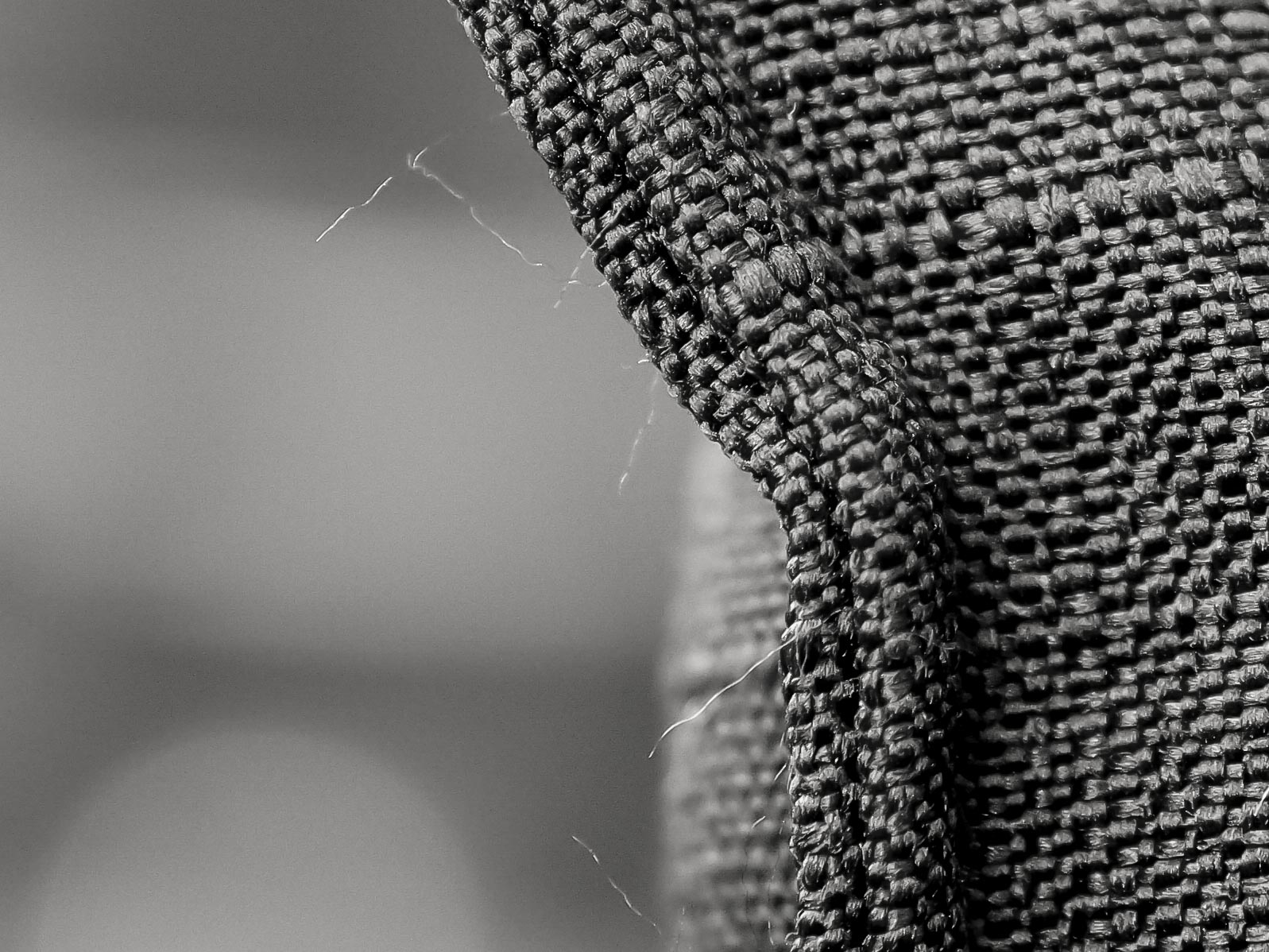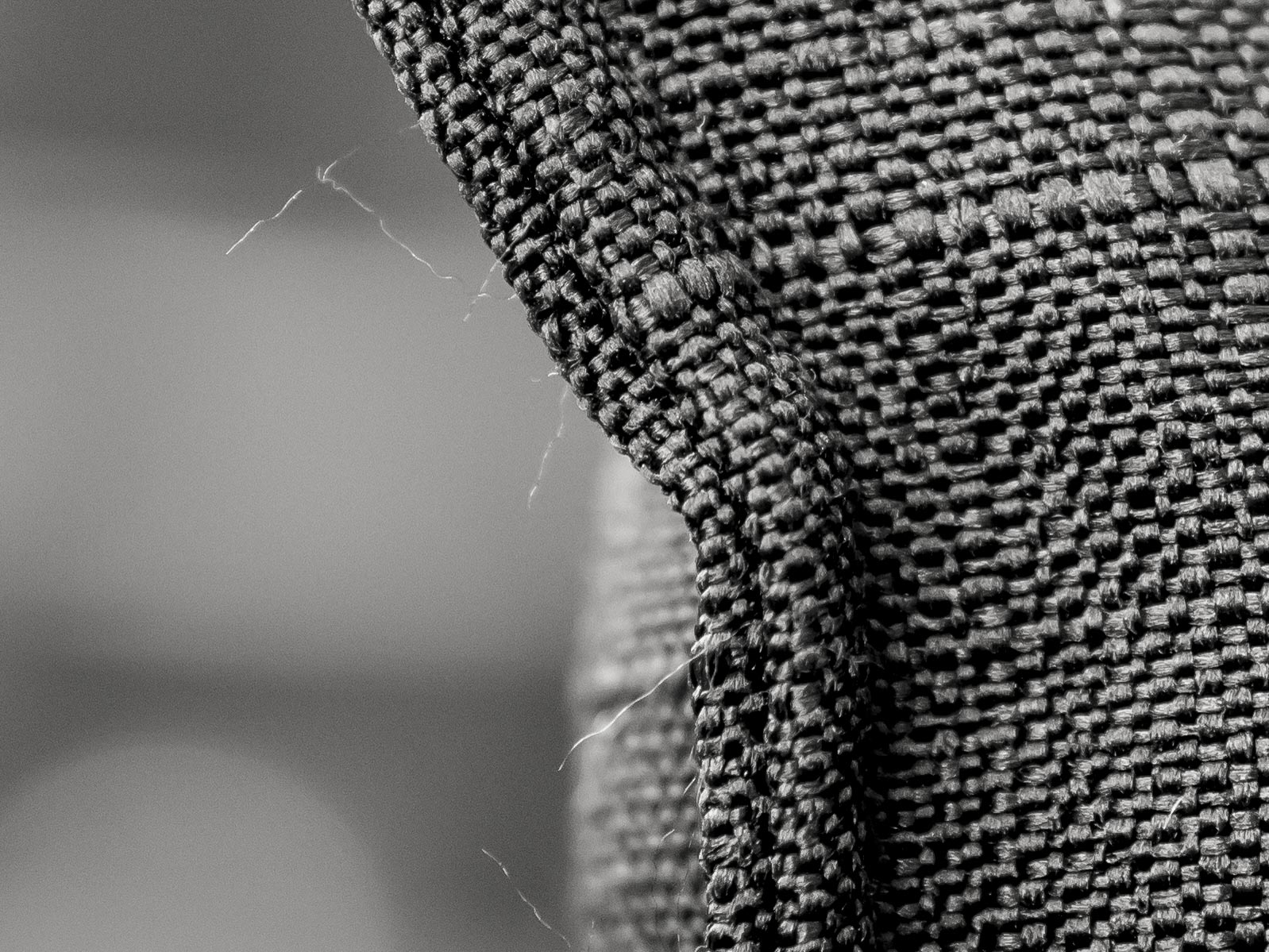Mono conversions seem to much the same dynamic as the colour ones I previously posted about.
The 45mm lens used previously is a little stressed here with a high contrast subject, high magnification (1200 pixels square) and set wide open at f1.8.
I can pick the jpeg straight away (the left one) because of the well controlled hazing flare around the loose hair strand. The fine detail in the cushion is about the same and the grain is smoother. The jpeg noise reduction is set to low and without experimenting, it looks better than the NR sliders set on 33 mono/50 detail and 25 colour/50 detail in Lightroom.
There is very little sharpness added to the jpeg, but significant sharpness and clarity added to the RAW as well as a touch of de-hazing. The balance between smoothness, detail, flare/haze reduction and contrast is quite excellent from the jpeg and it is a hell of a lot quicker to work with. Ironically a good amount of processing is taking out the aggressive settings from my RAW pre-sets.
I suppose the real question is, does Adobe serve the EM1’s sensor well enough (it is a little less sharp on DP review’s image comparison tool compared to the GX9, G9 and Pen F). If not, then the jpegs are closer to the designers intent and hopefully another programme or improved Adobe settings will get more out of it.
If Adobe are on track, as has generally been the case in the past, then Olympus has created a sensor and processor combination that is very good at their desired intent (low noise with good sharpness), and they are still doing a better job than Adobe at extracting that quality.

